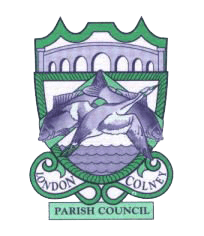Village History
London Colney was formally made an ecclesiastical Parish in 1909; however there are much earlier land divisions which suggest that parts of the parish boundary have considerable antiquity. Much of the landscape seen today is a result of past human activity. Relatively modern development and mineral extraction has changed much of the landscape with which people would have been familiar even a few decades ago. Only areas west of Shenley Lane and east of the by-pass would be in some part recognisable.
The local soils consist of boulder clay overlain with semi-permeable stony clay known locally as ‘Hoggin’ with pockets of sand and gravel. The Upper Colne Valley contains mineral deposits which have been widely exploited altering the local river environs. The hydrology consists of the River Colne which is fed by the Colney Stream and the Salisbury Brook. These features were more prolific in the past and were supplemented by ponds, one of which still makes its presence felt on White Lion Lane, now St Anne’s Road.
The Domesday Survey of 1098 suggests that London Colney including the Napsbury area was made up of woodland and mixed agriculture such as arable and pasture. The earliest signs of human activity are prehistoric, the remains of which have been found to the west of the parish. Mesolithic tools of hunter gatherers have been found by the river. Crop marks indicate various earthworks including, ditches, barrows and round houses. It is in the later part of this period when large scale setting out is thought to have occurred. This may be why the overall pattern of the landscape is rectilinear in common with much of southwest Hertfordshire. It is possible to analyse the arrangement of fields and roads and demonstrate that the landscape may have been set out as early as the Bronze Age. The grain of fields and tracks runs approximately north west, away from the higher ground of the clay southern uplands of Ridge and Shenley Parishes. This pattern is more clearly seen on 19th century maps with roads and tracks that remain today.
From the late Iron Age and the Romano-British period the parish was at the periphery of the territory controlled from first, Verulamio and then Verulamium, no doubt it was farmed although direct evidence of Roman influence is yet to be found. In the age that followed the land was divided into large estates delineated by boundaries which were often natural features. About three quarters of the parish was part of the vast holdings of St Albans Abbey, the remaining land was divided between the Tyttenhanger and Park Estates, the latter comprised most of south west Hertfordshire.
The parish today is formed from three earlier parishes namely St Peters and Shenley. The third, a detached part of St Stephens, probably created in the 14th century at the same time as Ridge parish. London Colney first appeared on a Hertfordshire map of 1645. The village grew when the coaching route from London to Holyhead was in its heyday. At which time there were 26 Inns and Pubs to accommodate the travellers, coachmen and their teams of horses. At the beginning of the 20th century the population figure was 3568 (including Colney Heath), today it is approximately 8000.
St. Peter’s was the first church built in 1825. Over the years churches and chapels of other denominations have followed. Up until the Second World War London Colney remained a trunk route for heavy freight lorries, having numerous transport cafes. Industry, hospitals and farming provided many jobs for young school leavers and the village shops were thriving businesses. Since World War II, large housing estates have taken over land which once yielded crops and included meadows where cattle grazed.
Interesting buildings that have stood the test of time include: Tyttenhanger House which has been occupied by the Earl of Caledon, the Earl of Hardwicke and Sir Henry Blount, Salisbury Hall formerly Shenley Manor, Colney Park House and Tyttenhanger Lodge, which are now the Pastoral Centre and the Colney Fox respectively. The Pastoral Centre was built in the ancient monastic style with a cloister surrounding an inner garden. The building itself was started in 1899 following the demolition of the old Colney Park Mansion House. The Neo-Tudor building is classed as one of the architect Leonard Stokes’s greatest works. The chapel designed by Ninian Comper is greatly admired. The Chantry Chapel in the grounds of the Pastoral Centre is of special interest. Legend has it to be the site of the home of St Alban before his arrest and execution in the city of Verulamium now named in his honour. The whole site is recorded in the Domesday Book.
Some of the most attractive properties in the village are located in the Waterside area. Waterside House formerly Rose Cottage, is an impressive house on a farmstead site which is referred to as existing at the time of the Domesday Census. The many smaller cottages in this area are also worthy of note, some being over 150 years old.
Notable individuals that have resided in London Colney include; Nell Gwynn, Lady Randolph Churchill, Sir Nigel Gresley and Walter Goldsmith. The celebrated artist Gordon Beningfield grew up in the village, and Louis Wain, known as ‘The man who drew cats’, was a long term resident of Napsbury Hospital. The actor Phillip Madoc lived in the village for a number of years.
